Introduction #
The authors introduced a Cherry Chevre: A Fine-Grained Dataset for Goat Detection in Natural Environments dataset for goat detection that contains 6160 annotated images captured under varying environmental conditions. The dataset is intended for developing machine learning algorithms for goat detection, with applications in precision agriculture, animal welfare, behaviour analysis, and animal husbandry. The annotations were performed by expert in computer vision, ensuring high accuracy and consistency.
Motivation
Goats, widely kept as livestock globally, are recognized for their adaptability, high productivity, and the quality of their milk and meat. Nevertheless, researchers encounter the challenge of efficiently detecting and monitoring goat herds to analyze their behavior. Visual observation, a time-consuming and error-prone method, poses difficulties in acquiring detailed data on the precise movements and behaviors of goats. An alternative approach involves utilizing GPS, but this method requires handling the animals and may be inaccurate, particularly in isolated locations, especially when monitoring at a pasture scale.
Automated methods employing computer vision techniques offer a promising solution to overcome challenges in behavior analysis. However, the successful development of these techniques relies heavily on the availability of high-quality datasets for training and evaluation. Despite the presence of livestock detection datasets, there remains a notable scarcity of comprehensive, high-quality datasets specifically designed for goat detection. Furthermore, the accuracy of detection is intricately linked to the quality of the dataset.
To address this gap, the authors present the inaugural dataset for goat detection, comprising 6160 annotated images of goats captured under diverse environmental conditions. These images were collected through field surveys, and each image was meticulously annotated with bounding boxes delineating the goat’s body. The bounding boxes adhere at the pixel level around the body, accounting for factors such as feet on leaves and fur that may create blur. The annotations were executed by a proficient expert in the field of computer vision, ensuring a high degree of accuracy and consistency. The dataset encompasses images depicting goats in various poses and orientations, including standing, grazing, and lying down, captured under varying lighting conditions, ranging from bright sunlight to low light.
Data Acquisition
-
Cross-call. The crosscall Trecker X2, a robust smartphone, served as the imaging tool for capturing a total of 297 images at different dates and times, providing a diverse range of lighting and environmental conditions. This device is equipped with advanced sensors, ensuring the capture of high-quality images. The Trecker X2’s rear camera boasts a 12-megapixel sensor with an aperture of f/2.0, enabling the capture of clear and sharp images even in low-light conditions. Similar to contemporary smartphones, it features an auto-focus system to guarantee that images are consistently in focus. The image collection took place at the INRAE-Duclos facility in Guadeloupe, French West Indies, with some shots near Albiez-Montrond and others near Tesq and Montpeyroux in France during 2020. The dataset encompasses a variety of subjects, including white sheep, goats, and predominantly Creole sheep, which bear a striking resemblance to European goats in appearance.
-
Phantom3. Creole goats, engaging in grazing activities across two distinct pastures (G1 + G2), were documented using a phantom3 UAV drone equipped with a 12-megapixel camera sensor. The camera, featuring a 94-degree field of view lens for expansive shots, captured images at a maximum resolution of 4000 × 3000 px. The observational study spanned four consecutive days in April 2017 at the INRA-PTEA farm (16° 2 N; 61° 2 W), with a total of 47 images re-annotated to include young goats (kids). To accommodate the small size of the animals and the large image dimensions, each original image was subdivided into smaller segments, resulting in 696 images, each with dimensions of 1000 × 750 px.
| Source | Date | Images |
|---|---|---|
| G1 | 10/04/2017 | 299 |
| G2 | 10/04/2017 | 281 |
| G1 | 11/04/2017 | 35 |
| G2 | 11/04/2017 | 46 |
| G1 | 12/04/2017 | 35 |
| Videos | 13/04/2017 | 150 |
Number of annotated images by date for the Phantom3.
- Time-lapse camera. The researchers utilized construction timelapse camera, specifically the TLC2000 pro model from the year 2018 manufactured by Brinno, a brand previously employed in various studies. These cameras capture images at 1.3 megapixels with a resolution of 1280 × 720 px, utilizing jpeg compression. In the initial phase of the study, distinct experimental plots were established to investigate the detection and tracking of goats and sheep. The first subset comprised seven indoor-raised Creole sheep with identical reddish coats. The second dataset featured a single Creole sheep with a brown coat, while the third included nine goats in close proximity to the camera, six of them sporting dark coats and the remainder having red coats. Additionally, a few distant goats were annotated in the dataset. Building on prior research, the authors expanded their dataset by collecting additional data in natural environments encompassing various lighting conditions. The established framework from earlier studies underwent refinement and testing as the researchers monitored two goat herds in farm-like conditions. One timelapse camera was deployed to observe an area approximately 20 × 20 meters, and multiple cameras were strategically combined to monitor the entirety of the pasture.
| Date | Study | Images |
|---|---|---|
| 2018 | 19 | 140 |
| 2020 | 20,21 | 1446 |
| 2022 | 22 | 784 |
Number of annotated images by date for the TLC2000 device.
- Tracking series. A CCTV camera (ENEO - IPD-75M2713M5A) boasting a resolution of 2592 × 1944 px was employed to record 17 videos capturing goats grazing in a pasture throughout 2022 over five distinct days. The purpose behind this recording was the development of a tracking algorithm. Each video was subsampled to yield 98 images, comprising 50 with non-overlapping goats and 50 featuring a minimum of two goats overlapping. These video sessions occurred at two locations within the INRAE-PTEA facility in Guadeloupe, French West Indies. In early 2023, an additional set of six videos was created over three separate days at the experimental plot in Duclos. These videos featured male goats exhibiting varied coat colors, including dark, white, russet, and dark-russet. Each goat was equipped with a collar, distinguished by red, yellow, orange, and blue colors, respectively, to facilitate the attachment of an accelerometer. Concurrently, eight more videos were recorded at Gardel in early 2023, spanning four different days.
| Date | Location | Images |
|---|---|---|
| 12/04/2022 | Duclos | 98 |
| 22/04/2022 | Duclos | 687 |
| 26/04/2022 | Duclos | 197 |
| 17/02/2023 | Duclos | 136 |
| 23/02/2023 | Duclos | 280 |
| 24/02/2023 | Duclos | 97 |
| 02/05/2022 | Gardel | 196 |
| 16/06/2022 | Gardel | 489 |
| 14/03/2023 | Gardel | 146 |
| 16/03/2023 | Gardel | 33 |
| 17/03/2023 | Gardel | 25 |
| 24/03/2023 | Gardel | 25 |
Dates, location and number of annotated images, using the ENEO camera.
- External. This subset amalgamates images from two distinct sites. The first site, named Mosar, is situated at the INRAE UMR 791 in Grignon, France. Within this subset, European goats housed indoors are featured, showcasing two pens each accommodating eight animals. The camera and feeding tray setup primarily captures the goats from behind, with a sub-sampling of four 30-minute videos. The second collaborator is situated at the Experimental Unit FERLUS, presenting a limited collection of ground-level images depicting European goats in an outdoor pasture. The image sizes for the first and second subsets are 1280 × 720 px and 4032 × 3024 px, respectively.
| Date | Location | Images |
|---|---|---|
| 23/03/2022 | Mosar-p1 | 151 |
| 23/03/2022 | Mosar-p2 | 45 |
| 23/03/2022 | Mosar-p3 | 45 |
| 23/03/2022 | Mosar-p4 | 44 |
| 10/03/2016 | Ferlus | 14 |
Date, location and number of annotated images for external sources.
Summary #
Cherry Chevre: A Fine-Grained Dataset for Goat Detection in Natural Environments is a dataset for an object detection task. It is used in the livestock industry.
The dataset consists of 6159 images with 35364 labeled objects belonging to 1 single class (goat).
Images in the Cherry Chevre dataset have bounding box annotations. All images are labeled (i.e. with annotations). There are 3 splits in the dataset: train (4907 images), test (636 images), and val (616 images). Alternatively, the dataset could be split into 5 data acquisition sources: tracking (2400 images), timelaps camera (2327 images), phantom3 (846 images), external (296 images), and crosscall (290 images). Additionally, every image marked with its subfolder tag. Images with tracking source have 2023 or 2022 tag. The dataset was released in 2023 by the INRAe, France.

Explore #
Cherry Chevre dataset has 6159 images. Click on one of the examples below or open "Explore" tool anytime you need to view dataset images with annotations. This tool has extended visualization capabilities like zoom, translation, objects table, custom filters and more. Hover the mouse over the images to hide or show annotations.

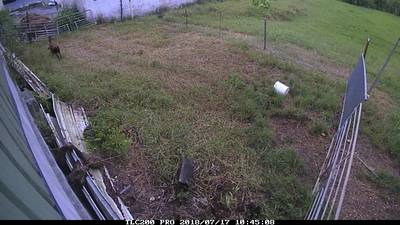







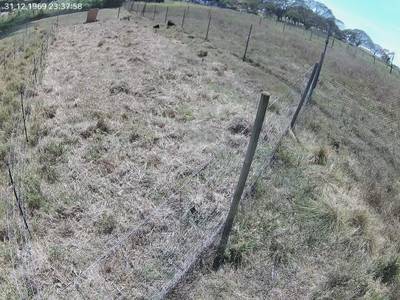







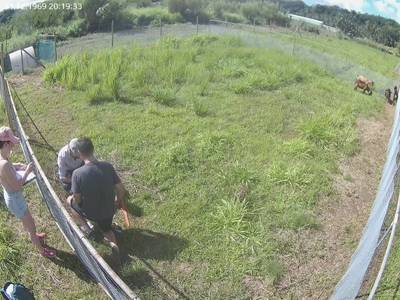



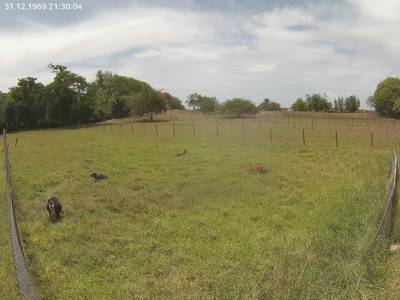









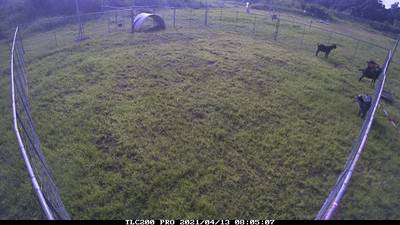







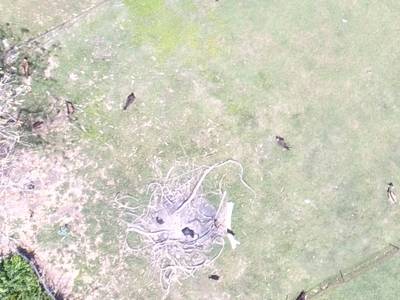







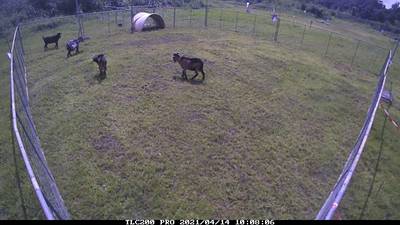

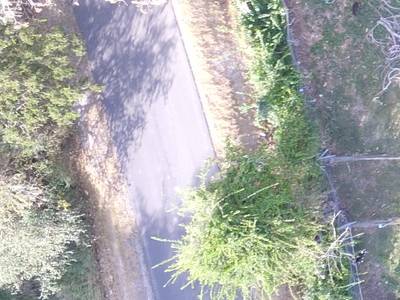



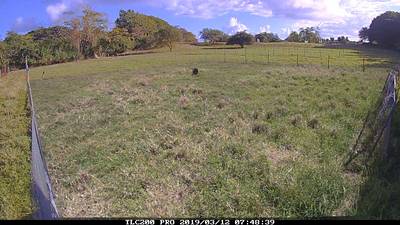

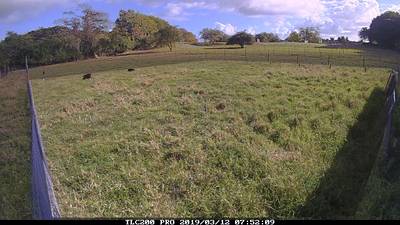




Class balance #
There are 1 annotation classes in the dataset. Find the general statistics and balances for every class in the table below. Click any row to preview images that have labels of the selected class. Sort by column to find the most rare or prevalent classes.
Class ㅤ | Images ㅤ | Objects ㅤ | Count on image average | Area on image average |
|---|---|---|---|---|
goat➔ rectangle | 6159 | 35364 | 5.74 | 2.1% |
Images #
Explore every single image in the dataset with respect to the number of annotations of each class it has. Click a row to preview selected image. Sort by any column to find anomalies and edge cases. Use horizontal scroll if the table has many columns for a large number of classes in the dataset.
Object distribution #
Interactive heatmap chart for every class with object distribution shows how many images are in the dataset with a certain number of objects of a specific class. Users can click cell and see the list of all corresponding images.
Class sizes #
The table below gives various size properties of objects for every class. Click a row to see the image with annotations of the selected class. Sort columns to find classes with the smallest or largest objects or understand the size differences between classes.
Class | Object count | Avg area | Max area | Min area | Min height | Min height | Max height | Max height | Avg height | Avg height | Min width | Min width | Max width | Max width |
|---|---|---|---|---|---|---|---|---|---|---|---|---|---|---|
goat rectangle | 35364 | 0.4% | 25.31% | 0% | 3px | 0.12% | 2069px | 59.87% | 77px | 6.23% | 1px | 0.08% | 2593px | 75.03% |
Spatial Heatmap #
The heatmaps below give the spatial distributions of all objects for every class. These visualizations provide insights into the most probable and rare object locations on the image. It helps analyze objects' placements in a dataset.

Objects #
Table contains all 35364 objects. Click a row to preview an image with annotations, and use search or pagination to navigate. Sort columns to find outliers in the dataset.
Object ID ㅤ | Class ㅤ | Image name click row to open | Image size height x width | Height ㅤ | Height ㅤ | Width ㅤ | Width ㅤ | Area ㅤ |
|---|---|---|---|---|---|---|---|---|
1➔ | goat rectangle | 12_29-04-22_04-32-31_00017550.jpg | 1944 x 2592 | 119px | 6.12% | 78px | 3.01% | 0.18% |
2➔ | goat rectangle | 12_29-04-22_04-32-31_00017550.jpg | 1944 x 2592 | 125px | 6.43% | 162px | 6.25% | 0.4% |
3➔ | goat rectangle | 12_29-04-22_04-32-31_00017550.jpg | 1944 x 2592 | 96px | 4.94% | 119px | 4.59% | 0.23% |
4➔ | goat rectangle | 2022-CabrisCouleur_cam1_B_5_11.jpg | 720 x 1280 | 46px | 6.39% | 27px | 2.11% | 0.13% |
5➔ | goat rectangle | 2022-CabrisCouleur_cam1_B_5_11.jpg | 720 x 1280 | 51px | 7.08% | 68px | 5.31% | 0.38% |
6➔ | goat rectangle | 2022-CabrisCouleur_cam1_B_5_11.jpg | 720 x 1280 | 41px | 5.69% | 43px | 3.36% | 0.19% |
7➔ | goat rectangle | 2022-CabrisCouleur_cam1_B_5_11.jpg | 720 x 1280 | 53px | 7.36% | 65px | 5.08% | 0.37% |
8➔ | goat rectangle | 2019-TimeLapse_4.Week_8Mars_14Mars_2019_camera32_set-27_camera-1_undist_000617.jpg | 720 x 1280 | 13px | 1.81% | 26px | 2.03% | 0.04% |
9➔ | goat rectangle | 2019-TimeLapse_4.Week_8Mars_14Mars_2019_camera32_set-27_camera-1_undist_000617.jpg | 720 x 1280 | 19px | 2.64% | 13px | 1.02% | 0.03% |
10➔ | goat rectangle | 2019-TimeLapse_4.Week_8Mars_14Mars_2019_camera32_set-27_camera-1_undist_000617.jpg | 720 x 1280 | 15px | 2.08% | 24px | 1.88% | 0.04% |
License #
Cherry Chevre: A Fine-Grained Dataset for Goat Detection in Natural Environments is under Etalab Open License 2.0 license.
Citation #
If you make use of the Cherry Chevre data, please cite the following reference:
@data{QEZBNA_2023,
author = {Vayssade, Jehan-Antoine},
publisher = {Recherche Data Gouv},
title = {{CherryChèvre: A Fine-Grained Dataset for Goat Detection in Natural Environments}},
year = {2023},
version = {V1},
doi = {10.57745/QEZBNA},
url = {https://doi.org/10.57745/QEZBNA}
}
If you are happy with Dataset Ninja and use provided visualizations and tools in your work, please cite us:
@misc{ visualization-tools-for-cherry-chevre-dataset,
title = { Visualization Tools for Cherry Chevre Dataset },
type = { Computer Vision Tools },
author = { Dataset Ninja },
howpublished = { \url{ https://datasetninja.com/cherry-chevre } },
url = { https://datasetninja.com/cherry-chevre },
journal = { Dataset Ninja },
publisher = { Dataset Ninja },
year = { 2025 },
month = { nov },
note = { visited on 2025-11-26 },
}Download #
Dataset Cherry Chevre can be downloaded in Supervisely format:
As an alternative, it can be downloaded with dataset-tools package:
pip install --upgrade dataset-tools
… using following python code:
import dataset_tools as dtools
dtools.download(dataset='Cherry Chevre', dst_dir='~/dataset-ninja/')
Make sure not to overlook the python code example available on the Supervisely Developer Portal. It will give you a clear idea of how to effortlessly work with the downloaded dataset.
The data in original format can be downloaded here.
Disclaimer #
Our gal from the legal dep told us we need to post this:
Dataset Ninja provides visualizations and statistics for some datasets that can be found online and can be downloaded by general audience. Dataset Ninja is not a dataset hosting platform and can only be used for informational purposes. The platform does not claim any rights for the original content, including images, videos, annotations and descriptions. Joint publishing is prohibited.
You take full responsibility when you use datasets presented at Dataset Ninja, as well as other information, including visualizations and statistics we provide. You are in charge of compliance with any dataset license and all other permissions. You are required to navigate datasets homepage and make sure that you can use it. In case of any questions, get in touch with us at hello@datasetninja.com.


